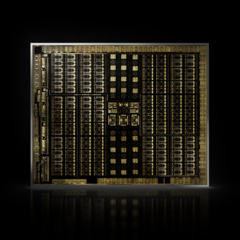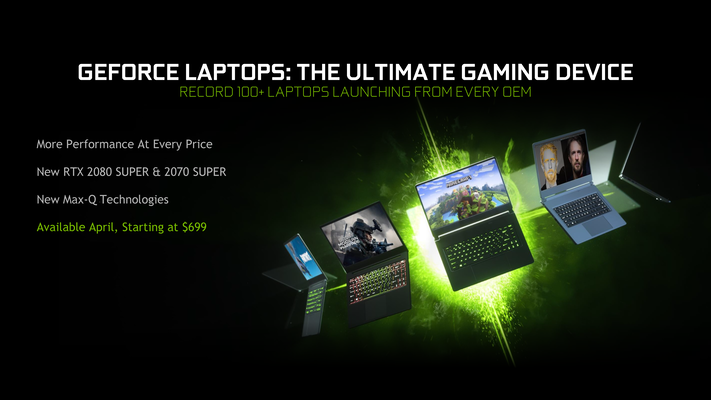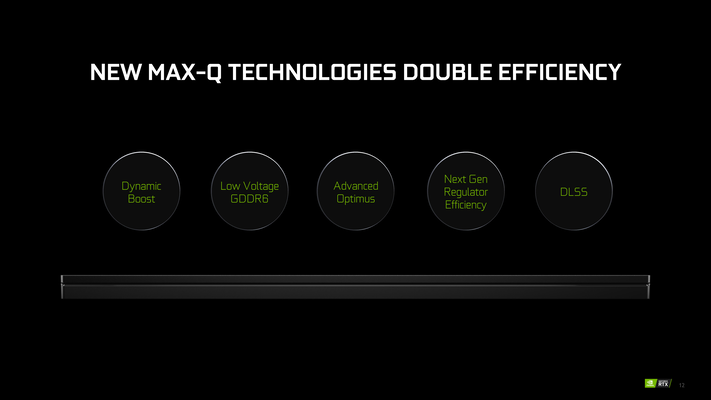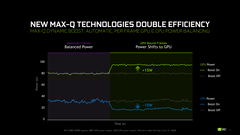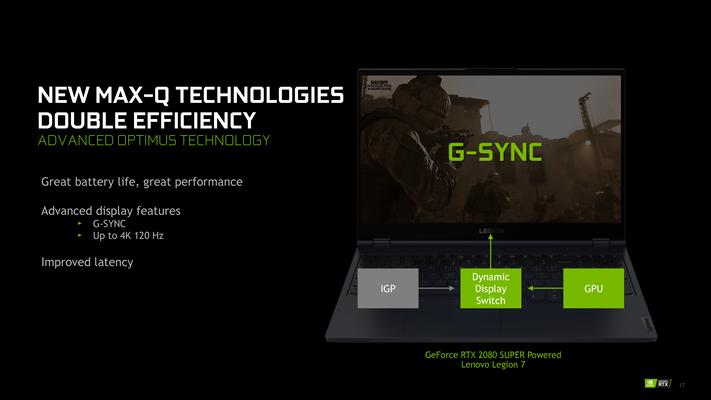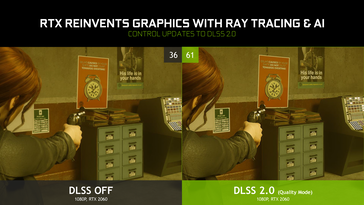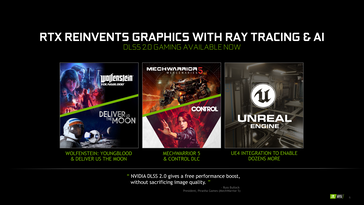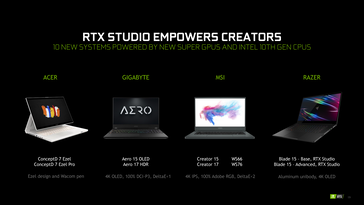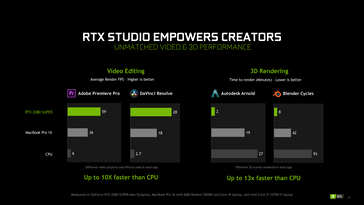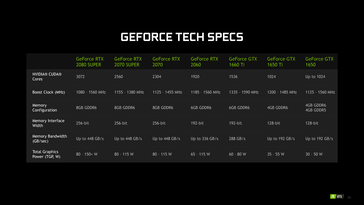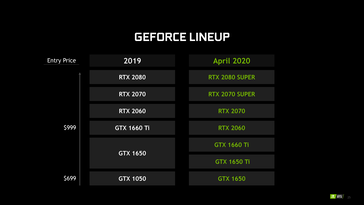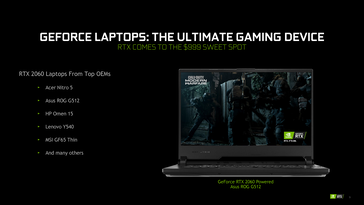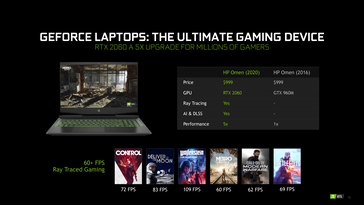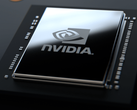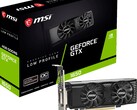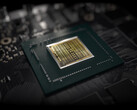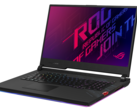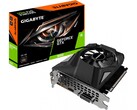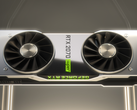Late last year, we first reported exclusively about NVIDIA's plans of launching Super variants of graphics cards in early 2020. Today, NVIDIA is taking the wraps off new RTX 20 Super GPUs that will find place in most gaming laptops this year. Today's launch includes the mobile versions of the RTX 2080 Super, RTX 2070 Super, and their corresponding Max-Q designs. We also get to see the introduction of the GTX 1650 Ti and a GDDR6 version of the GTX 1650. There are improvements across the board in the Max-Q design, DLSS, and Optimus so without further ado, let's jump into the details.
Hardware improvements
Max-Q Dynamic Boost
Arguably, the single biggest change this year is the Max-Q Dynamic Boost feature. Essentially, what this means is that both the CPU and GPU can now share the available thermal and power headroom depending on the workload. For instance, the power can be shifted from the CPU to the GPU in workloads such as gaming wherein the CPU is not stressed much. NVIDIA showed an example of the RTX 2080 Super 80W running Witcher 3 at Max Settings. In this case, Dynamic Boost is able to shift up to 15W of power from the CPU to the GPU (which now goes up to 95W) to extract more performance. NVIDIA said that it happens automatically and on a per-frame basis.
NVIDIA also offered us a few more details about Dynamic Boost. While the Max-Q Dynamic Boost allows for up to 15W TDP shifts, it is up to the OEM to configure that in 5W increments. This can be useful in processors such as the AMD Ryzen 9 4900HS wherein the TDP is constrained at just 35W. And yes, Dynamic Boost is fully compatible with AMD CPUs as well. NVIDIA also said that Dynamic Boost should not be influenced by Windows power plans and that they are working with OEMs to ensure this.
Advanced Optimus
There are a few improvements to the Optimus feature this time around. NVIDIA calls this Advanced Optimus and claims much improved battery life and performance improvements. For the first time, Optimus now allows for G-Sync displays and refresh rates up to 120 Hz at 4K with minimal latency.
DLSS 2.0
NVIDIA detailed improvements in Deep Learning Super Sampling (DLSS) 2.0 last month that aim to offer much improved image quality with choice of rendering detail, a 2x faster AI network, improved scaling across all resolutions, and a game-agnostic training network. Implementation of DLSS 2.0 requires developer support. Unreal Engine is offering DLSS 2.0 support and games such as Control, Deliver us the Moon, Wolfenstein: Youngblood, and Mechwarrior 5: Mercenaries are now enabled to use DLSS 2.0.
NVIDIA is also working with vendors to implement low-voltage GDDR6 memory and improved VRMs. Though not much details were offered with respect to these two technologies, they are still welcome steps as any thermal and power savings thus ensued can be directly transferred to the GPU for increased performance.
Content Creation
NVIDIA also briefly touched upon the benefits of RTX Studio for content creators. The company showed a comparison between an RTX 2080 Super-powered notebook, a MacBook Pro powered by Core i9 and Radeon RX 5500M, and a Core i7-10750H laptop in workloads such as video editing and 3D rendering. It is not really an apples-to-apples comparison (pun intended), but what NVIDIA is trying to convey here is that RTX Studio-powered laptops are now more powerful options for creatives than the MacBook Pro.
SKUs and Availability
Apart from the RTX 2070 Super, RTX 2080 Super, and their Max-Q versions, NVIDIA is also introducing a new GTX 1650 Ti for mid-range gaming notebooks alongside a new GTX 1650 with GDDR6 memory. The GTX 1650 Ti looks to be a purely mobile part as of now but isn't much different from the original TU117 mobile GTX 1650. It has 1,024 CUDA Cores and a slightly higher TDP up to 55W. However, we get to hear from our sources the possibility of a GTX 1650 Ti variant that can be configured up to 80W TDP. So many variants of a single product means that the exact GTX 1650 Ti the customer would be getting depends solely on the OEM and product advertising may or may not offer specific details.
As is the case with desktops, the regular, non-Super RTX 2080 cards are no longer the company's focus. The regular RTX 2070 will continue to stay, however. Although not listed, there's an RTX 2060 Max-Q offering as well that we've seen in the new Asus Zephyrus G14. With the new refresh, NVIDIA is positioning the RTX 2060 as the face of gaming laptops starting from US$999. Those wanting to go lower can opt for GTX 1650 gaming laptops touted to start from US$699. Below this price will be the domain of the supposedly new MX330 and MX350 GPUs.
OEMs such as Acer, Asus, Gigabyte, Razer, etc. will be shipping gaming laptops powered by the RTX 20 Super mobile GPUs in the next few weeks. Expect more designs in the months to come.
Source(s)
NVIDIA Press Brief




